The Jack & Co. location in Sydney’s Northwood neighborhood may have a fuel canopy, but it’s not your typical gas station.
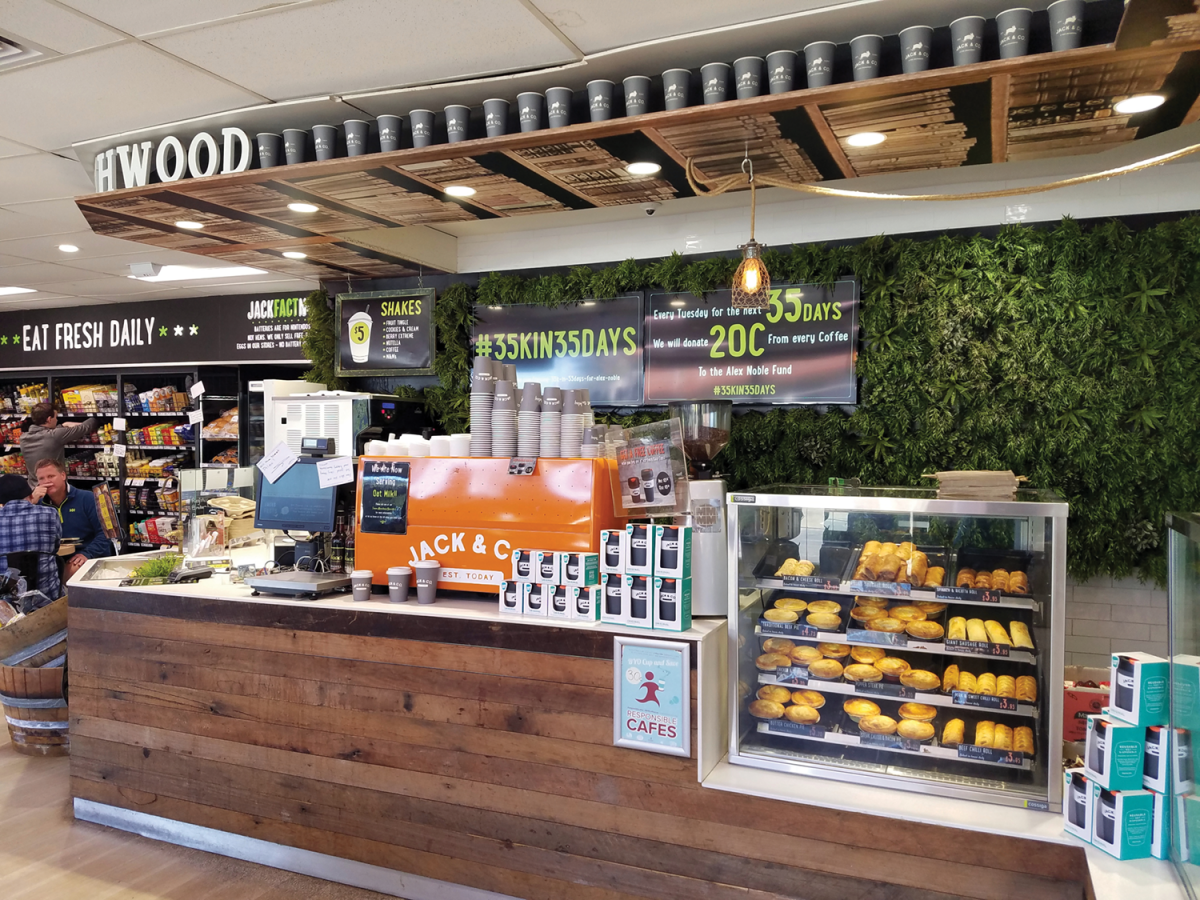
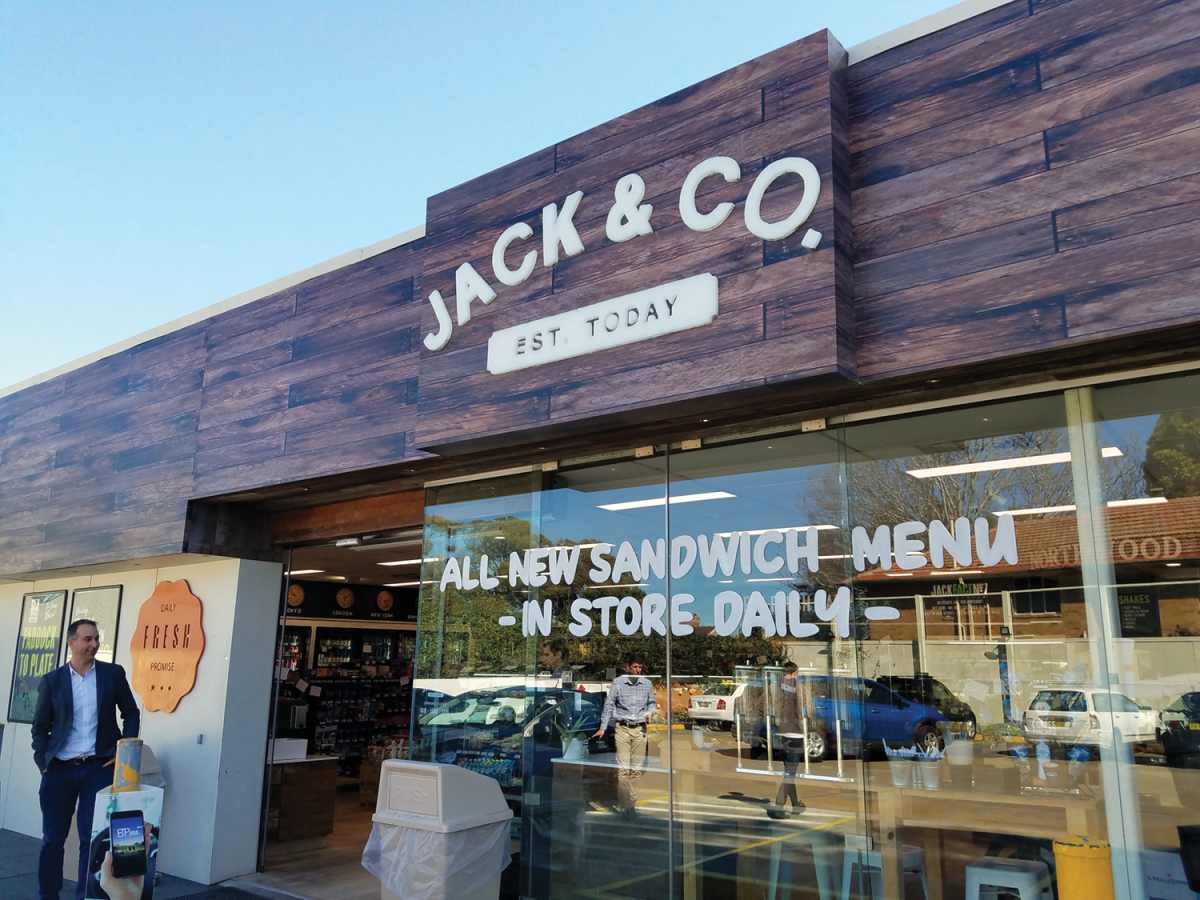 At Jack & Co., sandwiches are prepared fresh, on-site every day and packaged in artisan-style to-go boxes. Meat pies, rolls, pastries and other baked goods also entice customers.
At Jack & Co., sandwiches are prepared fresh, on-site every day and packaged in artisan-style to-go boxes. Meat pies, rolls, pastries and other baked goods also entice customers.
Customers who enter the small store are immediately greeted with a relaxed atmosphere reminiscent of a neighborhood café—with modern wood and metal accents, and even a bit of chalkboard aesthetic. Lettering on the walls proclaims that yes, all of their sandwiches are prepared fresh, on-site, every day.
There’s a selection of beverages and snacks that are found at most convenience stores, but that’s where the similarities end. To the left of the entrance is a rectangular vessel sink for customers to wash their hands after refueling. A nearby sign reads, “pumpin’ gas can be a little dirty at times.” On the right side of the store are three tables, a bar counter and a café complete with barista service. Glass display cases feature a variety of meat pies, rolls, pastries and other baked goods. Customers watch as kitchen staff assemble fresh sandwiches, package them into artisan-style to-go boxes and place them in a cooler near the front door. The front of each box is stamped with a Jack & Co. logo.
It’s easy to see how Jack & Co.’s approach stood out when owner and former Caltex executive, Wade Death, founded the company in 2012. Now with five locations, Jack & Co. uses the freshness of its food and coffee offer to separate itself from the competition.
“As an industry, we still need to progress our food into an offer that is comparable with High Street locations, QSRs and cafes,” he told Convenience & Impulse Retailing in 2016.
The costs involved in building and maintaining a cold chain network in Australia are prohibitive.
Death also saw an opportunity to differentiate his brand through customer service, arguing that the industry’s past level of service was subpar and tolerated only because customers had few other choices. Channel blurring has provided more options for convenience in today’s marketplace, however, and Jack & Co. believes its culture is a strong differentiator.
This was obvious during a recent visit. Jack & Co. launched a fundraising campaign to support a local rugby player who suffered a debilitating injury. Titled #35KIN35DAYS, it was a community-driven effort to raise funds for equipment that’s necessary for home care. Customers were encouraged not only to donate on GoFundMe but also to purchase $5 cards and fill them with personal messages for the player and his family. At the time of writing, more than $41,000 had been raised.
Like their counterparts in the U.S., Australian fuel and convenience retailers are embracing change and responding to an evolving marketplace. Retailers like Jack & Co. are noteworthy, however, for another reason: They’re finding success with foodservice despite challenges that have stymied development in the past.


Source: IBISWorld, 2011
Barriers to Foodservice
On the surface, Australia’s 6,644 convenience stores face similar challenges as those in the United States. The concept of “convenience” is up for grabs in today’s changing retail landscape, and everyone from grocers to QSRs are finding ways to meet demands for immediacy. Customers also are more discerning. They arrive with higher expectations, and many are looking for better—and often fresh—products.
Whereas many U.S. retailers are pushing forward with fresh foodservice as a differentiator—complete with large kitchens and touchscreen ordering—this approach is less common in Australia due to two significant hurdles: supply and labor.
Although the surface area of Australia is nearly the same as the contiguous United States—2.97 million square miles versus 3.12 million—it has less than 8% of the population as the U.S. Of the country’s 25.47 million citizens, more than half live in just three cities. Sydney and Melbourne alone house 5.48 and 5 million people, respectively.
Australians also enjoy the world’s highest national minimum wage of $19.49 Australian dollars per hour, or $740.80 AUD per 38-hour week. That’s equivalent to $13.12 USD.
Eighty percent of the products we sell are products we have always sold in convenience stores. Yet by altering the look of the store, these same products sell 30% more.
“Australia’s vast geography, sparse population outside the major cities and higher labor costs have made the delivery of foodservice difficult,” said Nic Moulis, director of FuelNGo. “These factors, in the past, have led to an inability to deliver high quality foodservice consistently and at the right price.”
“The costs involved in building and maintaining a cold chain network in Australia are prohibitive,” said Darren Park, CEO of United Convenience Buyers. “This means new providers find it challenging to establish a foothold—reducing competition—and existing providers compete fiercely with cost. Customer churn is high as a result.”
Despite these hurdles, 2018 was a successful year for the industry. Total in-store sales reached $8.6 billion AUD. Total food sales, including beverages, grew by 3%—almost double that of non-food.
Café or C-store?
In recent years, retailers have found much success with hot dispensed beverages. It’s a particularly competitive category given Australia’s advanced coffee culture—much of which originated in Melbourne cafés. Indeed, it is this very culture that led to the 1993 development of McCafé by a McDonald’s licensee in Melbourne.
According to the 2018 Australasian Association of Convenience Stores (AACS) State of the Industry Report, retailers saw 14.6% growth in hot dispensed beverages last year. The hot beverage shopper also had the strongest single mission of any category—with 73% citing buying a drink as their main mission. Sixty-eight percent said “good quality” is why they buy coffee at a particular store, followed by price at 51%. The average hot beverage customer visits 3.5 times per week.
“I am pleased to say that we are now considered a very viable destination for quality, value priced coffee,” says Jeff Rogut, CEO of AACS. “7-Eleven has been a leader in innovation in this category and reported annual sales of over 70 million cups of coffee over the past year. BP has also just announced a collaboration with an upmarket retailer of food and other merchandise for their convenience stores.”
Another approach can be seen at Urbanista Cafe. Beyond the BP fuel canopy at the location in Smeaton Grange, just southwest of Sydney, customers discover a modern store that blends the café experience with a convenience store in an upscale, modern environment.
“What I looked at when I was contemplating my café offer, is what did I want my store known for?” said Eddy Nader, managing director of Nader Petroleum Group. “The heaviest amount of foot traffic into my stores was between 5 a.m. and 9 a.m., so it was a no brainer—it had to be coffee.”
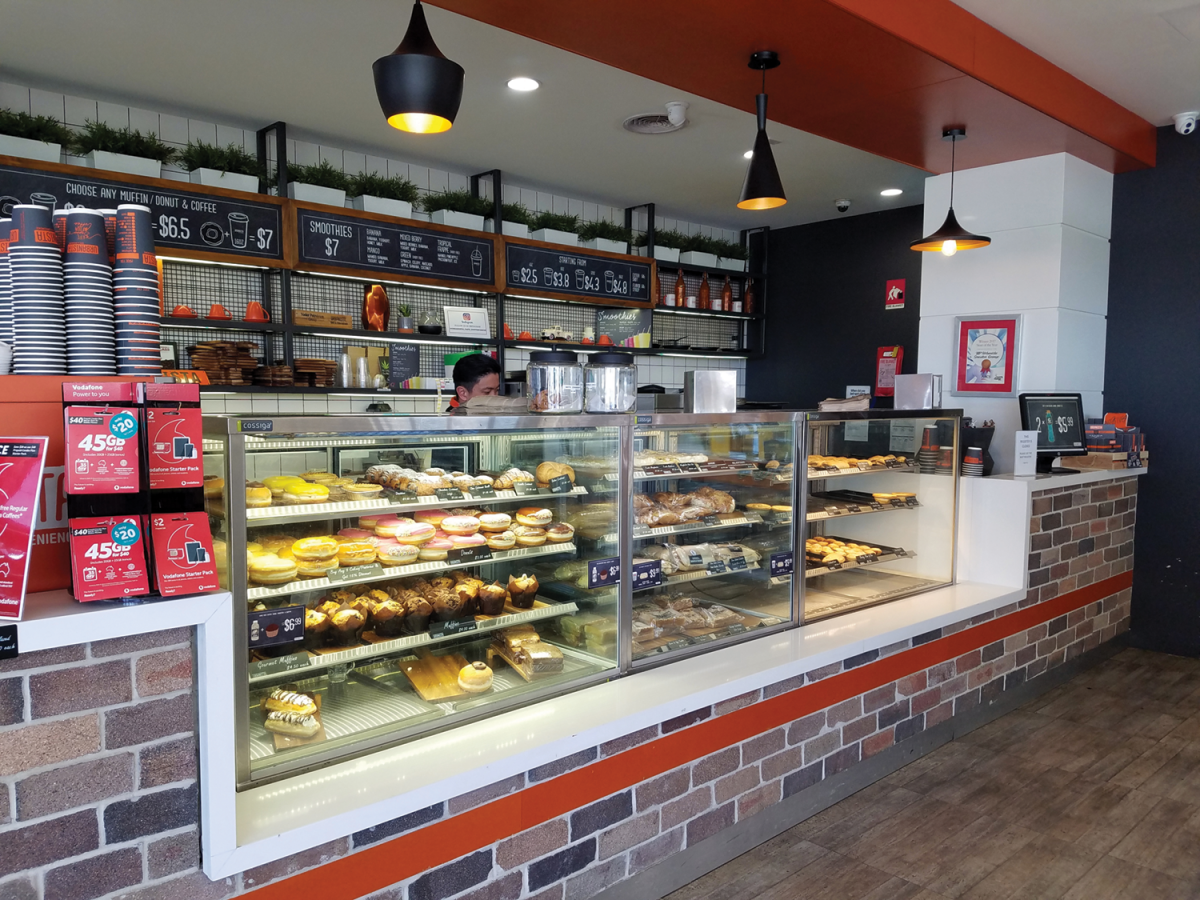
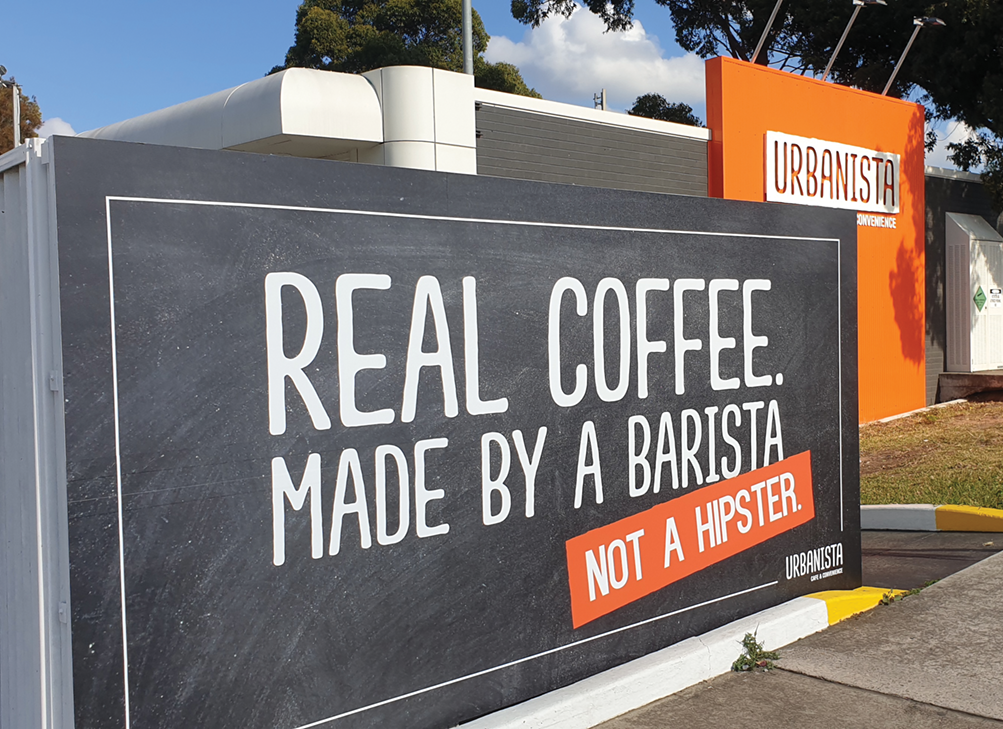
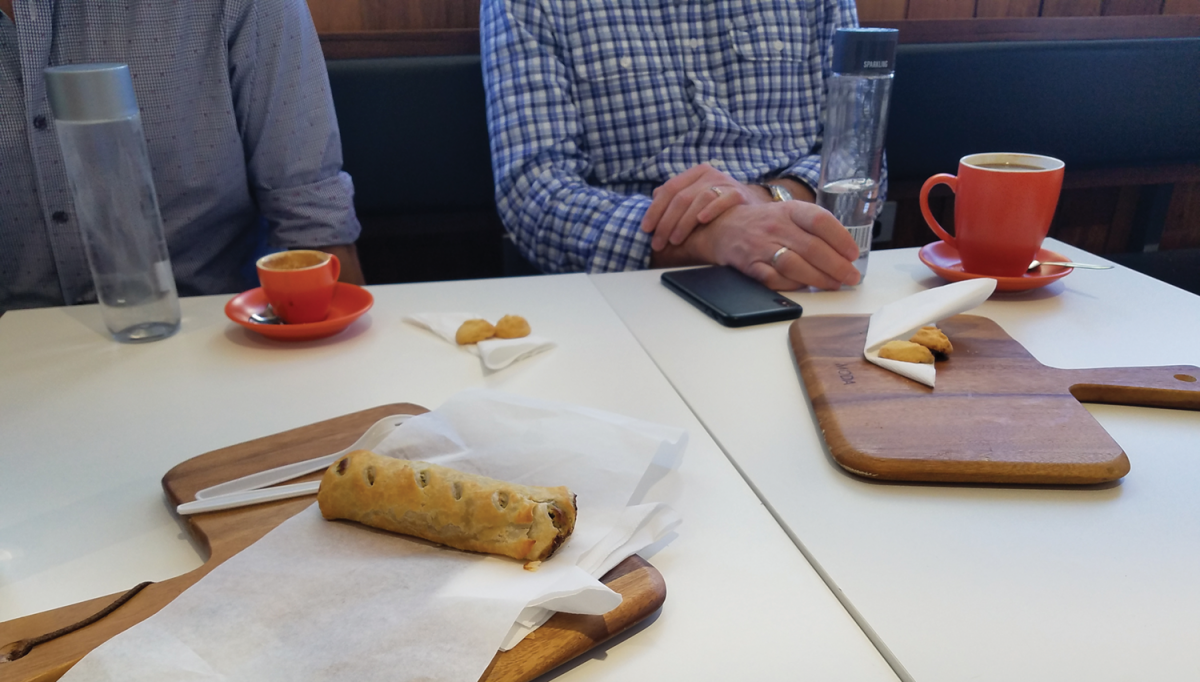 Urbanista blends the café experience with a convenience store in an upscale environment. Coffee is front and center, and there’s a strong focus on presentation. On a recent visit, spinach and ricotta rolls were brought to the table on wooden serving boards.
Urbanista blends the café experience with a convenience store in an upscale environment. Coffee is front and center, and there’s a strong focus on presentation. On a recent visit, spinach and ricotta rolls were brought to the table on wooden serving boards.
“Australia was quickly becoming a proud nation of coffee snobs, so the quality had to be first class, and first-class barista made coffee is what I delivered. I tasted over one hundred different blends before I settled on a blend that was first released in 1954. … I made sure that my coffee offer was front and center of my offer.”
For those who want to stay and purchase a meal, the café features a wide variety of meat pies, rolls and pastries. Rather than the fresh approach of Jack & Co., however, Urbanista begins with frozen products.
“Fresh has started to take off in convenience in Australia. We still have a long way to go, but we will get there,” said Nader. “The more convenience stores that start to adapt and upgrade their stores to offer foodservice, the easier it will be to source fresh product. Unfortunately for convenience stores in Australia, we are still the poor cousins to large-format grocery stores and established QSRs. It is mainly for this reason that we still rely on frozen. There still isn’t enough demand in convenience to source product at a competitive price.”
Nonetheless, the food is delicious and served as one would expect in an upscale café. During a recent visit, spinach and ricotta rolls were brought to a table on wooden serving boards. Coffee was served in ceramic cups; the rolls were warm and flaky.
Where Urbanista truly shines is through its customer experience. The store simply looks classy, and the service is memorable. Even the brick on the front counter is actual brick, rather than vinyl. The café seating offers multiple charging ports for customers who want to linger, and large windows flood the area in natural light. A nearby wall showcases black-and-white photos of an AMOCO station once operated by Nader’s father. The child in one photo is Nader himself.
“Eighty percent of the products we sell are products we have always sold in convenience stores,” said Nader. “Yet by altering the look of the store—making it look classy—these same products sell 30% more than they used to.”
Finding New Solutions
Despite foodservice challenges, retailers are working around the constraints and finding solutions. One new concept to emerge in recent years is Bowser Bean Cafe from the team at Vantage Fuels.
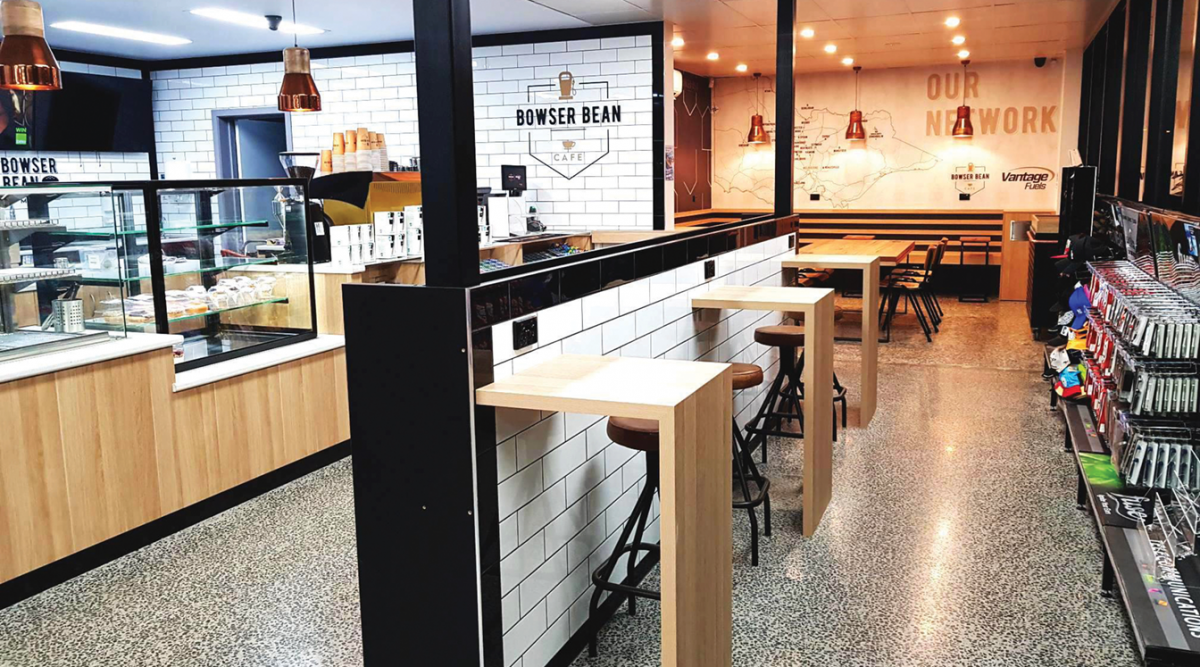
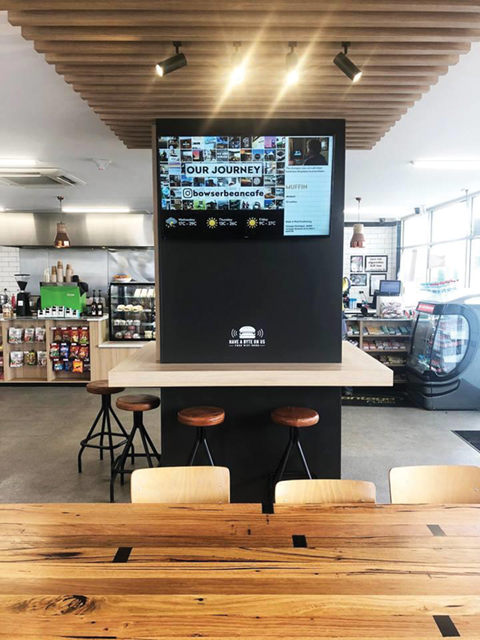
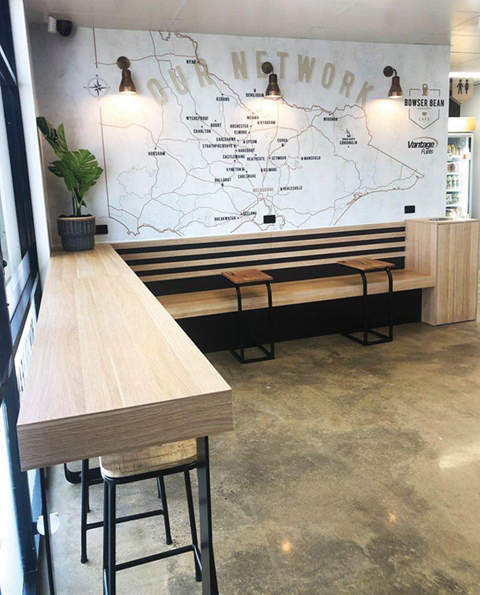
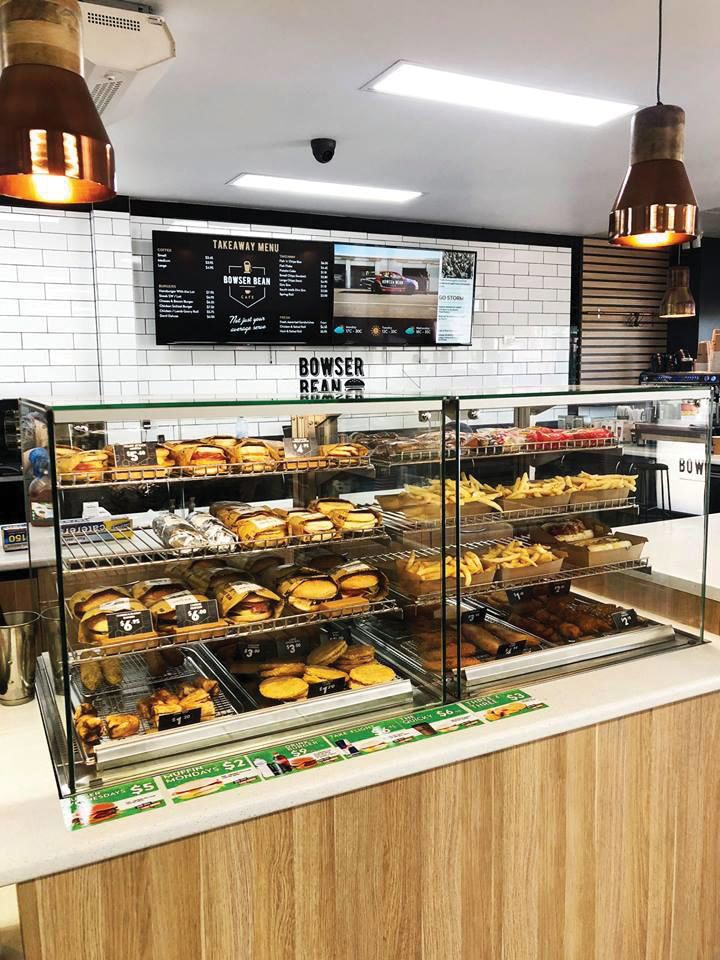 Vantage Fuels launched the Bowser Bean Cafe brand in 2017 to differentiate its premium foodservice and coffee offer from the fuel offer. The cafe has a partnership with Uber Eats. Operating in regional locations allows Bowser Bean Cafe to provide remote towns with their own premium food and coffee outlet.
Vantage Fuels launched the Bowser Bean Cafe brand in 2017 to differentiate its premium foodservice and coffee offer from the fuel offer. The cafe has a partnership with Uber Eats. Operating in regional locations allows Bowser Bean Cafe to provide remote towns with their own premium food and coffee outlet.
After discovering that the “Vantage Cafe” banner didn’t resonate with some customers—since they still perceived it as a service station—the decision was made to create a new brand. The concept launched in 2017 and is now at 11 locations. Inside, the stores resemble Melbourne cafés and provide
a welcoming environment for customers.
“We needed a new identity that not only relates to our customer demographic but also separates us from general negative perceptions of service stations,” said Matthew Gronow, marketing manager for Bowser Bean Cafe and Vantage Fuels. “Because we operate in regional locations, we find that Bowser Bean Cafe has provided these remote towns their own premium food and coffee outlet at an amazing value. Hiring local naturally creates loyalty with our customers. Customers know they can come in and grab their regular coffee or hearty burger while having a chat with our friendly staff.”
So far, the concept has been a success. Gronow says one location regularly makes 500 burgers every Wednesday. Their two main food specials—$2 Muffin Monday and $5 Burger Wednesday—have become talking points within each town they operate, and they’re even attracting non-fuel customers.
To further grow their foodservice offer, the company recently began a partnership with Uber Eats. As Gronow explains, Vantage Fuels quickly realized that among other benefits, the online marketplace helped remove the “fuel stigma.” Individuals who use the Uber Eats only see the Bowser Bean Cafe logo.
This has also been great news for existing Bowser Bean customers. A recent announcement that their Ballarat North location is available through Uber Eats generated a lot of buzz on Facebook, and many customers tagged their friends and family in the comments.
“The simple fact is that we are all getting lazier, and we are willing to pay that little bit extra for convenience,” says Gronow. “I feel that there is an element of complacency within our industry, because fuel is a necessity for the majority of the population. We need to adapt and grow with our innovators.”
Looking Forward
According to Darren Park, margin pressure is one of the major challenges facing the industry over the next five years. “Product and service margins are linked to every single action a c-store takes,” said Park, “and they are also linked to many of the unique regulatory issues that they face. As the lines continue to blur between grocery, QSR and convenience, shoppers expect to move seamlessly across all formats without a punitive ‘convenience tax’ being priced into one channel’s goods and services.”
Park continued, “I think it’s a bit rich for manufacturers to offer unique deals for QSRs, for example, simply because they sell food. Well, so does convenience; and with ‘On the Go’ being such a crucial occasion, we have a unique and innovative ability to activate that occasion in conjunction with manufacturers.”